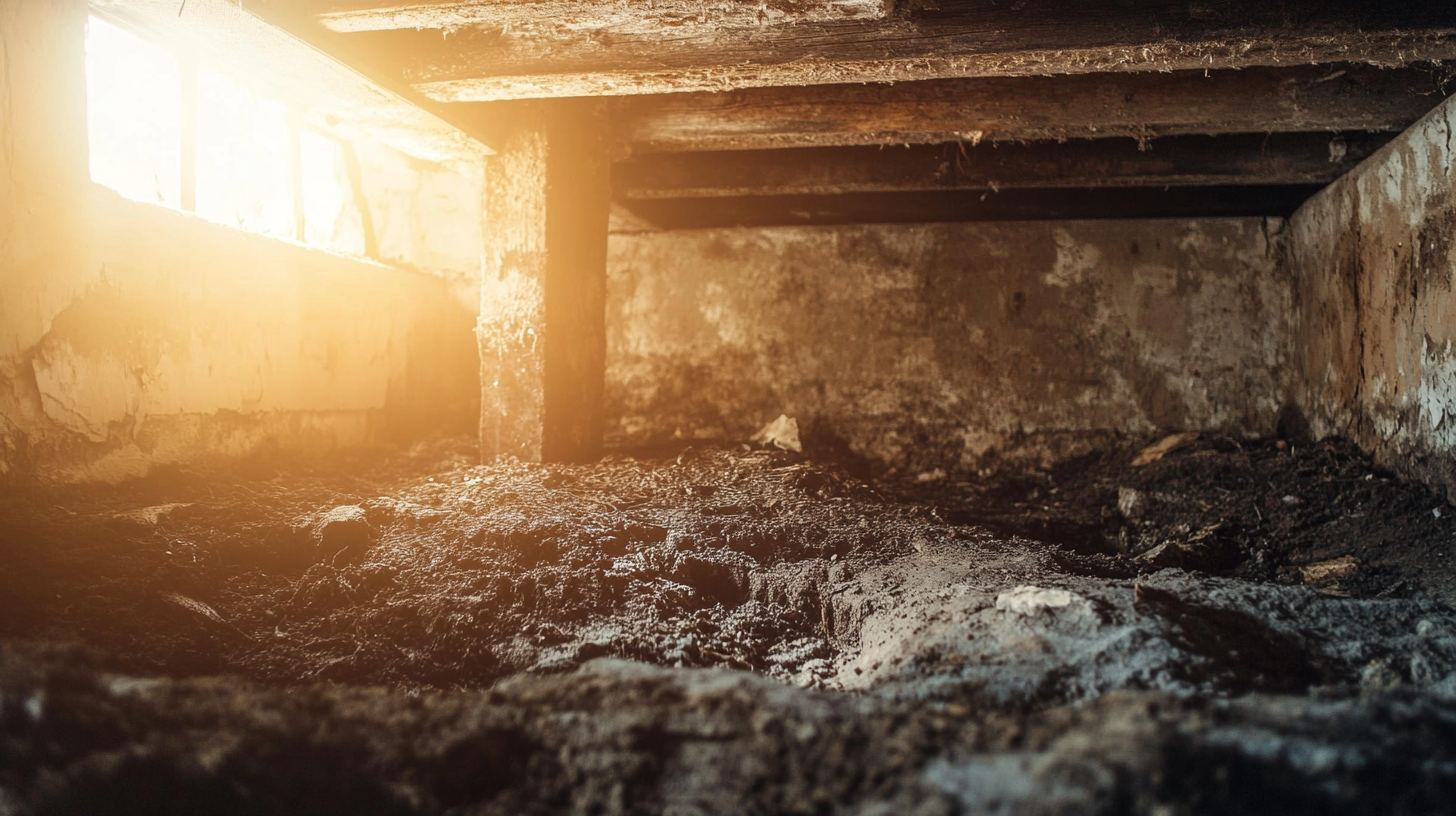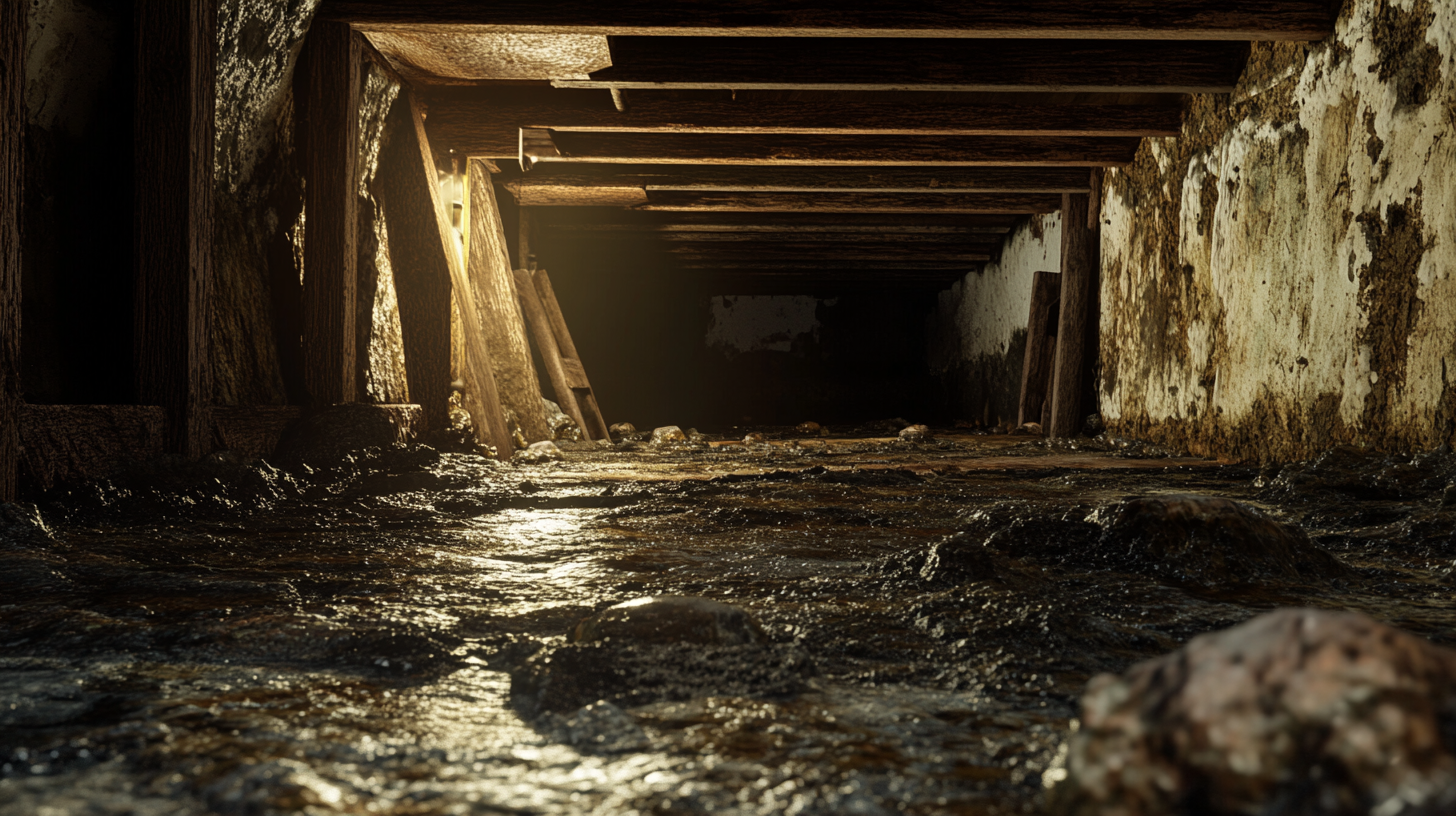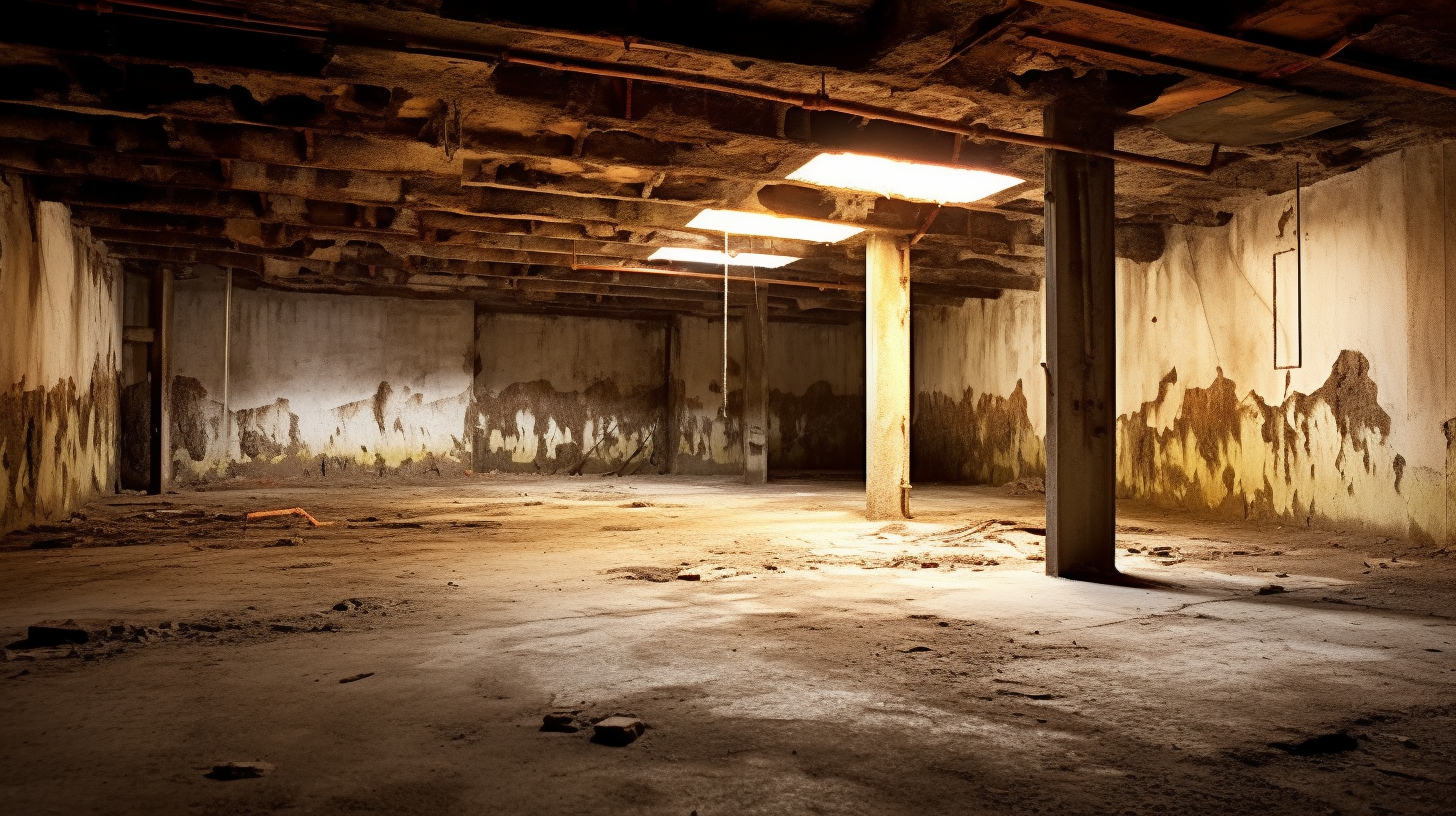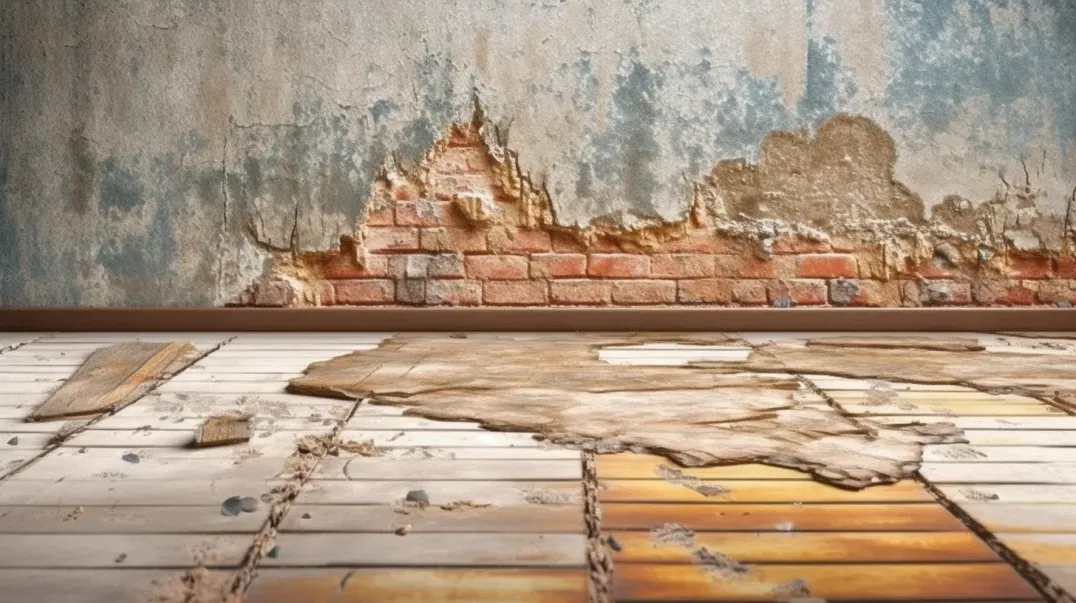Now IS THe Time To...

Crawl Space Services In Knoxville, TN
Stetson Howard: 865-432-6743
CRAWL SPACE ENCAPSULATION, REPAIR, WATERPROOFING & MOLD REMOVAL
No-Obligation, Free Inspections
No-Obligation Free Estimates
We Warranty All of Our Work
100% Satisfaction Guaranteed
The foundation of your home is much more than just the concrete or blocks laid beneath your feet—it is the bedrock upon which the safety, stability, and durability of your entire home rests. Maintaining a solid foundation is not just about preventing visible cracks or damage; it’s about ensuring the longevity and security of your living space. This blog explores the critical role that a well-maintained foundation plays in the overall health of your home. We will delve into how a robust foundation safeguards against structural issues, environmental threats, and financial loss, while also enhancing the comfort and livability of your home.
Through expert insights and practical tips, this blog aims to empower homeowners with the knowledge to recognize early signs of foundation problems and understand the necessary steps to address them. By maintaining a solid foundation, you not only protect your investment but also ensure a safe and stable environment for you and your family.
Identifying Types of Foundation Cracks
The integrity of your home’s foundation is crucial for its overall stability and safety. Recognizing the different types of foundation cracks and understanding their implications can help you take timely actions to protect your property. This blog section delves into the common types of foundation cracks, helping homeowners identify and respond to these potential threats effectively.
Hairline Cracks
Characteristics of hairline cracks and their usual locations: Hairline cracks are thin and
superficial, typically no wider than 1/16 inch. They are commonly found in newly poured concrete as it settles and cures, which can cause minor shrinkage. These cracks are often seen running vertically or diagonally on both interior and exterior walls.
When to monitor versus when to act on these cracks: Hairline cracks are generally not a sign of serious structural issues and can be monitored without immediate repair. However, if you notice these cracks widening, becoming longer, or accumulating moisture, it may be time to seek professional advice to ensure they are not indicative of a larger problem.
Structural Cracks
Description of structural cracks, including typical sizes and patterns: Structural cracks are more serious and often wider than 1/4 inch. They can appear in a variety of patterns, often as horizontal cracks along the foundation or vertical cracks that run straight or in a stairstep pattern along joints and corners. These cracks may indicate significant movement or stress within the foundation.
Indicators that structural cracks are worsening and require immediate attention: If structural cracks are accompanied by other signs of foundation distress, such as doors and windows that won’t close properly, gaps between floor and walls, or visible sagging, immediate action is necessary. Increasing width or length of the cracks over time also signals that the structural integrity of the foundation may be compromised.
Settlement Cracks
How to identify settlement cracks and differentiate them from other types: Settlement cracks occur when part of a building’s foundation has moved downward, settling into the ground unevenly. These cracks are typically larger and more noticeable than hairline cracks and can form a zigzag pattern that is more pronounced than the uniform lines of hairline cracks.
Common causes of settlement cracks and associated risks: Settlement cracks can be caused by a variety of factors, including soil erosion, insufficient soil compaction before construction, or changes in ground moisture levels. The risks associated with settlement cracks include water intrusion, increased structural instability, and potential for significant property damage if not addressed.
Causes of Foundation Cracks
Understanding the root causes of foundation cracks is crucial for any homeowner looking to maintain the structural integrity of their property. These cracks, while often alarming, can be the result of various factors, from environmental stressors to construction shortcomings. This section explores the primary causes behind foundation cracks, equipping homeowners with the knowledge to identify potential risks and implement effective preventative measures.
Environmental Factors
Impact of soil movement, moisture changes, and climate on foundation stability: Soil
composition and moisture levels are significant determinants of foundation stability. Changes in moisture, whether due to seasonal variations or water drainage issues, can cause soil to expand or contract, exerting pressure on the foundation. This cyclical movement can lead to the development of cracks over time. Additionally, climates that experience extreme temperature fluctuations can further aggravate these conditions, as foundations continuously adjust to expanding or contracting soil.
Specific environmental conditions that exacerbate foundation issues: Areas with expansive clay soils are particularly vulnerable to causing foundation problems due to their high moisture variability. Similarly, regions prone to heavy rains or flooding can see accelerated soil erosion around the foundation, leading to uneven settling and cracking. Homeowners in such areas should be particularly vigilant and may need to take extra preventative steps, such as improving drainage around the foundation perimeter.
Construction and Material Failures
Role of construction quality and material adequacy in foundation crack development: The quality of construction and the materials used play a pivotal role in the longevity and stability of a foundation. Poor construction practices, such as inadequate soil testing before building, improper curing of concrete, or the use of substandard building materials, can all lead to weaknesses in the foundation that manifest as cracks.
Examples of how poor construction practices lead to foundation problems: For instance, if the foundation concrete is mixed with too much water, it can lead to shrinkage as it dries, creating cracks. Inadequately compacted soil can settle unevenly under the weight of the building, causing settlement cracks. Furthermore, using insufficient rebar reinforcement in concrete can reduce its strength and make it more susceptible to cracking under normal stresses.
DIY Repair Techniques for Minor Cracks
For many homeowners, discovering minor cracks in the foundation can be unsettling. However, with the right tools and a bit of know-how, you can handle minor repairs yourself, preventing further damage and maintaining the integrity of your home. This section of our blog provides a comprehensive guide to DIY foundation crack repairs, including the tools you'll need and step-by-step instructions to ensure the job is done safely and effectively.
Tools and Materials Needed
List of necessary tools and materials for DIY foundation crack repairs: To effectively repair minor foundation cracks, you will need a few essential tools and materials. These typically include:
- Epoxy injection kits or concrete sealant designed for foundation repair
- Caulking gun (for sealant application)
- Chisel or screwdriver (for removing loose debris)
- Wire brush (for cleaning the crack)
- Safety goggles and gloves
Tips on selecting high-quality materials: When choosing materials for foundation repairs, opt for products specifically designed for concrete repair, which will offer durability and flexibility to withstand soil movements and weather changes. Read product reviews and consult with hardware store experts to ensure you are selecting the best option available. Higher-quality materials might come at a higher cost but will provide longer-lasting protection against further damage.
Step-by-Step Repair Process
Detailed instructions for repairing minor cracks, including surface preparation, application of sealant, and curing time:
- Surface Preparation: Begin by cleaning out the crack using a wire brush. Remove any loose concrete, dust, or debris to ensure that the repair material adheres well.
- Applying the Sealant or Epoxy: If using a concrete sealant, carefully fill the crack using a caulking gun, ensuring the sealant is pushed deep into the crack before smoothing the surface with a putty knife. For epoxy kits, follow the manufacturer's instructions closely, usually involving injecting the epoxy directly into the crack.
- Curing Time: Allow the repair material to cure according to the product instructions, which can vary from a few hours to several days. Avoid any water exposure during this time.
Safety precautions to observe during DIY repair tasks: Always wear protective gear, including safety goggles and gloves, when performing foundation repairs to protect against harmful dust and chemicals. Ensure the work area is well-ventilated, especially when using chemical sealants or epoxy. Keep children and pets away from the area until the repair is complete and the materials have fully cured.
Professional Solutions for Major Foundation Repairs
When foundation cracks go beyond minor cosmetic issues, it becomes essential to seek professional help. Addressing major structural problems not only ensures the safety and stability of your home but also preserves its value. This part of the blog will guide you through understanding when professional intervention is necessary and what advanced repair techniques professionals might use to restore the integrity of your foundation.
When to Call a Professional
Guidelines for determining the severity of foundation cracks that require professional intervention: It’s time to call in a professional if you notice:
- Cracks wider than 1/4 inch,
- Horizontal or diagonal cracks that are widening over time,
- Cracks accompanied by other signs of structural distress, such as doors that won’t close, windows that jam regularly, or noticeable gaps between walls and the floor.
Warning signs that DIY methods are insufficient: If you’ve tried sealing a crack and it reopens or continues to expand, or if there are signs of water leakage through the crack despite attempts at repair, these are clear indicators that DIY solutions are inadequate. Additionally, if you notice a sudden appearance of multiple cracks or any cracks in the ceiling and upper walls, these could signify more serious structural issues that require immediate professional assessment.
Techniques Used by Professionals
Overview of advanced repair techniques such as underpinning, hydraulic lifting, and pier installation: Professionals use several sophisticated techniques depending on the severity and cause of the foundation damage:
- Underpinning: This method involves extending the foundation in depth or breadth so it rests on more supportive soil or distributes its load across a greater area. This is often achieved by using push piers or helical piers.
- Hydraulic Lifting: Also known as slab jacking, hydraulic lifting involves pumping a cement or polymer mixture into the space under the foundation slab to lift it back to its original position.
- Pier Installation: By driving steel pipe piers to remediate soil instability or to reach bedrock, this technique provides long-term stabilization of the foundation.
Case studies or examples of successful professional repairs: For instance, a residential home in California showing signs of significant settling was successfully stabilized by using helical piers to secure the foundation to deeper, more stable soil layers, effectively preventing further settlement. Another example is a historic building where hydraulic lifting was used to correct a subsidence problem caused by eroded soil under the foundation.
Preventative Measures to Avoid Future Cracks
Maintaining the integrity of your home’s foundation requires proactive measures and regular maintenance. Preventative care not only helps in avoiding costly repairs but also extends the lifespan of your home by keeping structural vulnerabilities at bay. This blog section discusses essential maintenance tips and long-term care strategies that homeowners can employ to prevent the development of foundation cracks.
Routine Maintenance Tips
Routine checks and simple maintenance tips to help prevent the development of foundation cracks: Regular maintenance is key in preventing foundation cracks. Homeowners should conduct seasonal inspections of their foundation, looking for any early signs of damage such as small cracks or areas where water pools near the base of the home. It’s also crucial to check for moisture in basements or crawl spaces, as this can be an indicator of foundation issues.
Importance of regular inspections and what to look for: During inspections, pay close attention to:
- New or expanding cracks in the foundation,
- Doors or windows that begin to stick or fail to close properly,
- Gaps forming between walls, ceilings, and floors,
- Visible sagging of any part of the structure.
These signs might indicate underlying problems that could escalate if not addressed promptly. Early detection through routine inspections allows for simpler, less invasive repairs that can avert more serious damage.
Long-Term Structural Care
Strategies for maintaining soil stability and proper drainage around the foundation: Ensuring that the soil around your foundation remains stable and well-drained is crucial in preventing cracks. This can be achieved by:
- Keeping the ground around your home graded away from the foundation to encourage water runoff,
- Installing a French drain system if necessary to redirect sub-surface water,
- Regularly checking and cleaning gutters and downspouts to ensure water is effectively directed away from the home.
Recommendations for landscaping, gutter maintenance, and water management to protect the foundation: Thoughtful landscaping can also play a significant role in maintaining foundation integrity. Choose plants that require less water to avoid excessive moisture accumulation around your foundation. Ensure that trees with large root systems are planted far enough away from the home to prevent roots from growing into the foundation. Regularly maintaining your gutters and ensuring that downspouts extend several feet away from the house foundation prevents water from pooling around the base, mitigating the risk of cracks forming due to hydrostatic pressure or soil erosion.
FAQs
Recent Blog Posts
Crawl Space News







